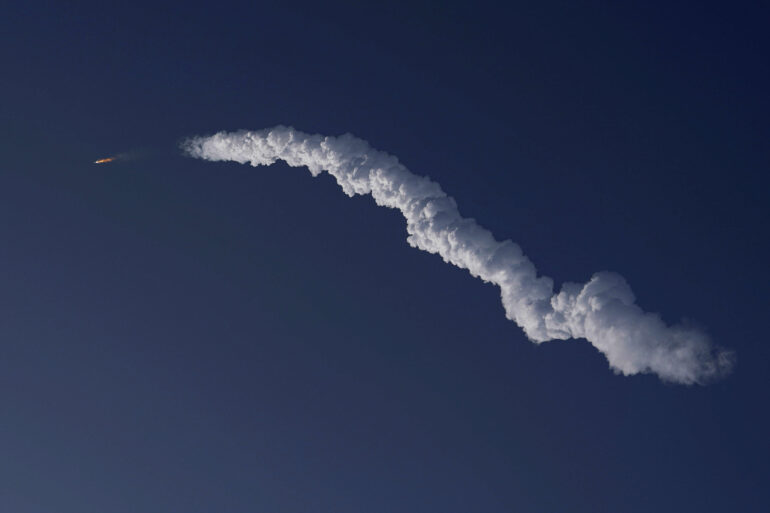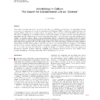SpaceX’s giant new rocket exploded minutes after blasting off Thursday on it first test flight and crashed into the Gulf of Mexico.
Elon Musk’s company was aiming to send the nearly 400-foot (120-meter) Starship rocket on a round-the-world trip from the southern tip of Texas, near the Mexican border. It carried no people or satellites.
Images showed multiple engines weren’t working on the 33-engine rocket as it climbed from the launch pad, reaching as high as 24 miles (39 kilometers.)
The flight plan had called for the booster to peel away from the spacecraft minutes after liftoff, but that didn’t happen. The rocket began to tumble and then exploded four minutes into the flight, plummeting into the gulf.
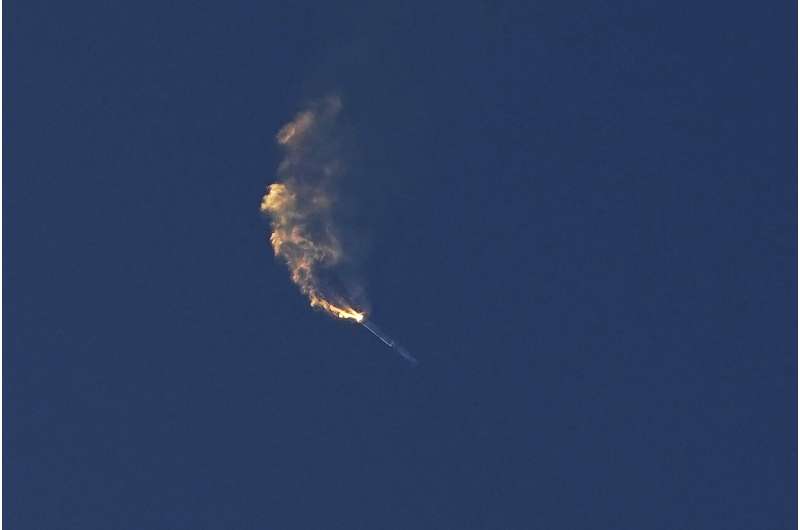
SpaceX’s Starship turns after its launch from Starbase in Boca Chica, Texas, Thursday, April 20, 2023. © AP Photo/Eric Gay
After separating, the spacecraft was supposed to continue east and attempt to circle the world, before crashing into the Pacific near Hawaii.
Throngs of spectators watched from South Padre Island, several miles away from the Boca Chica Beach launch site, which was off limits. As it lifted off, the crowd screamed: “Go, baby, go!”
Musk, in a tweet, called it “an exciting test launch of Starship! Learned a lot for next test launch in a few months.”
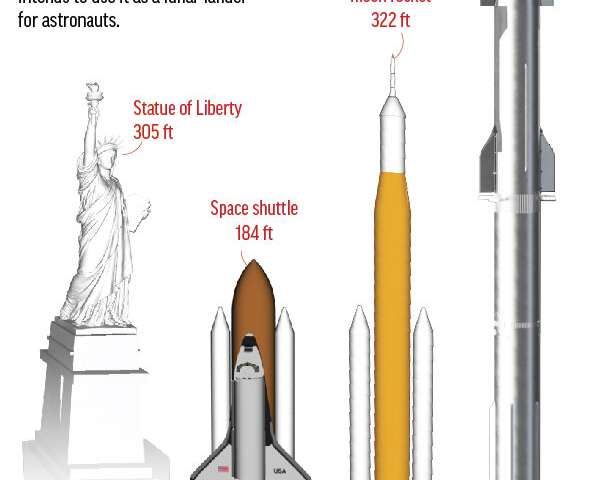
Starship is the biggest and mightiest rocket ever built, jutting almost 400 feet into the South Texas sky.
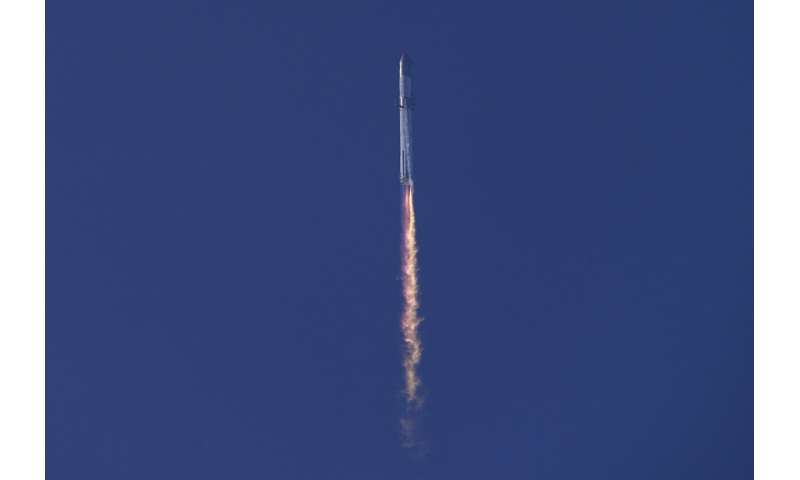
SpaceX’s Starship launches from Starbase in Boca Chica, Texas, Thursday, April 20, 2023. © AP Photo/Eric Gay
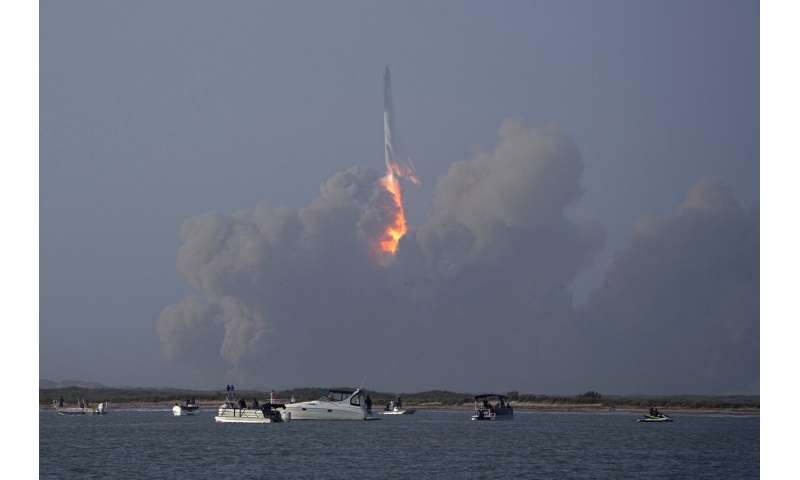
SpaceX’s Starship launches from Starbase in Boca Chica, Texas, Thursday, April 20, 2023. © AP Photo/Eric Gay
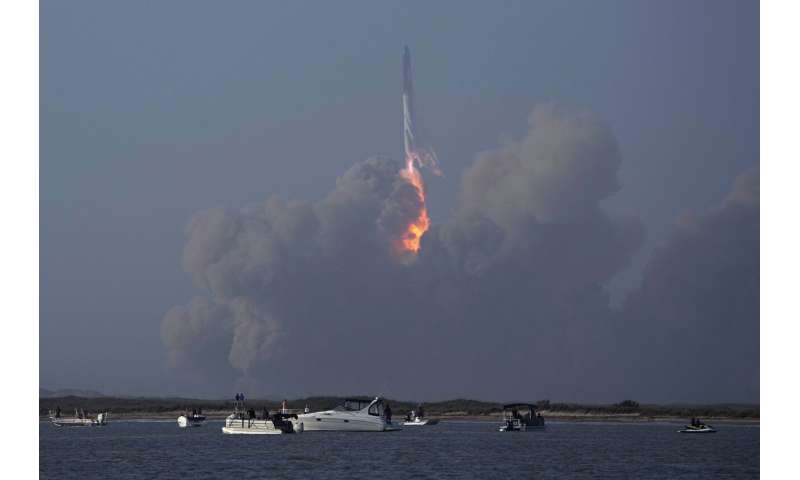
SpaceX’s Starship launches from Starbase in Boca Chica, Texas, Thursday, April 20, 2023. © AP Photo/Eric Gay
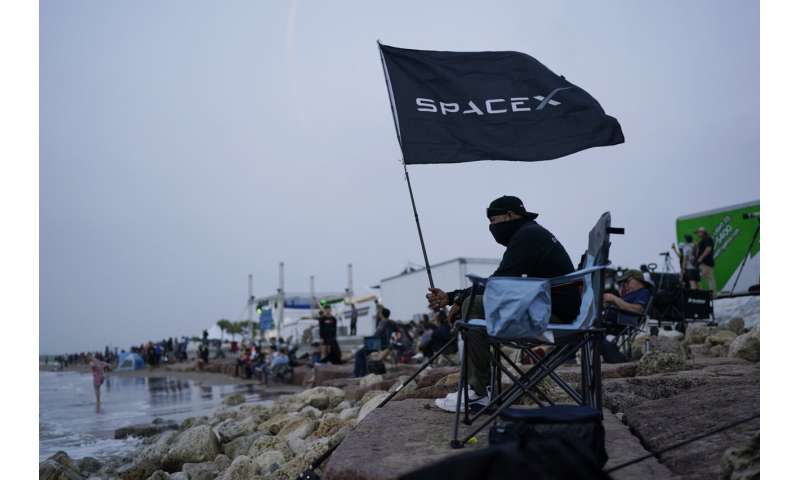
Jose Cabrera, a technician with SpaceX, waits as the SpaceX Starship, the world’s biggest and most powerful rocket, prepares for launch from Starbase in Boca Chica, Texas, Thursday, April 20, 2023. © AP Photo/Eric Gay
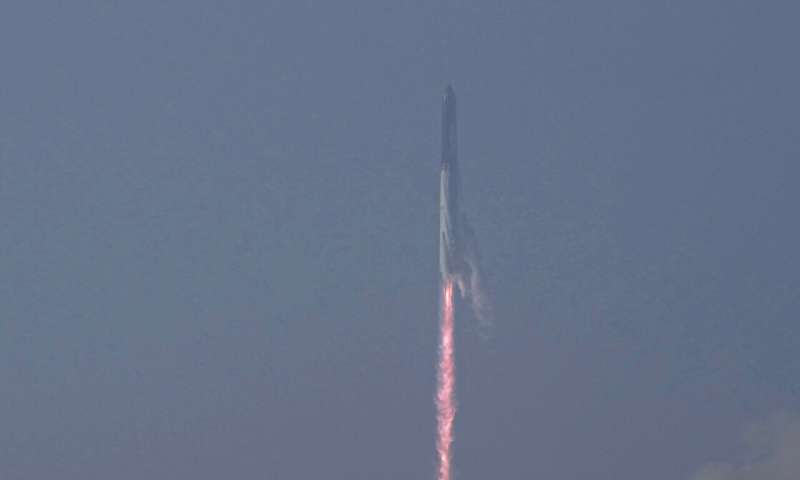
SpaceX’s Starship launches from Starbase in Boca Chica, Texas, Thursday, April 20, 2023. © AP Photo/Eric Gay
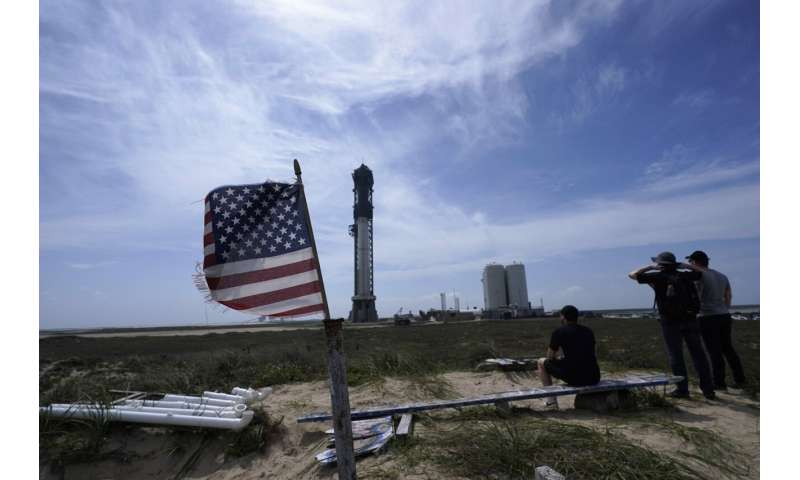
Onlookers watch as SpaceX’s Starship, the world’s biggest and most powerful rocket, stands ready for launch in Boca Chica, Texas, Sunday, April 16, 2023. The test launch is scheduled for Monday. © AP Photo/Eric Gay
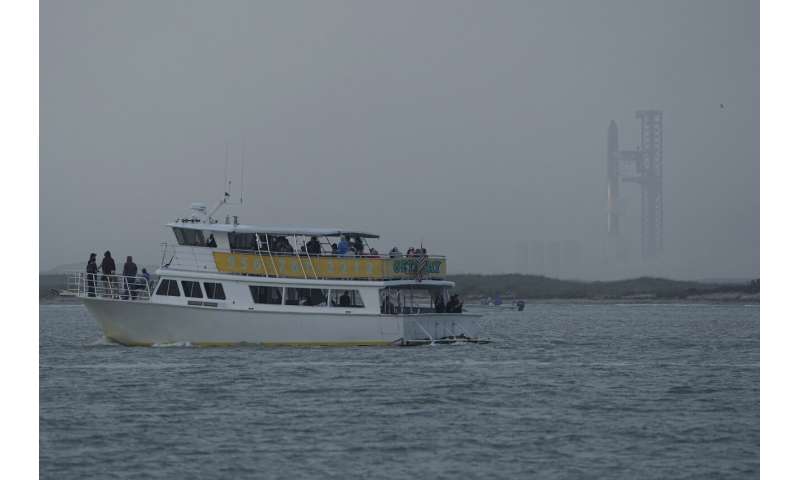
A tour boat passes SpaceX’s Starship, the world’s biggest and most powerful rocket, was it prepares to launch from Starbase in Boca Chica, Texas, Thursday, April 20, 2023. © AP Photo/Eric Gay
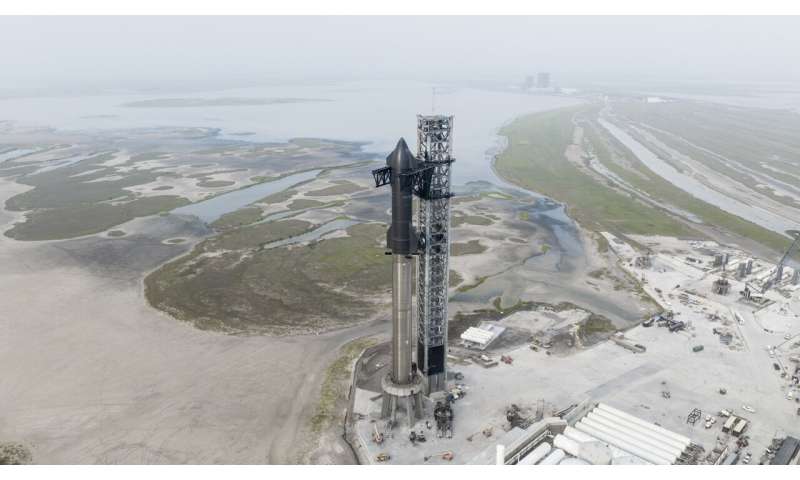
This undated photo provided by SpaceX shows the company’s Starship rocket at the launch site in Boca Chica, Texas. © SpaceX via AP
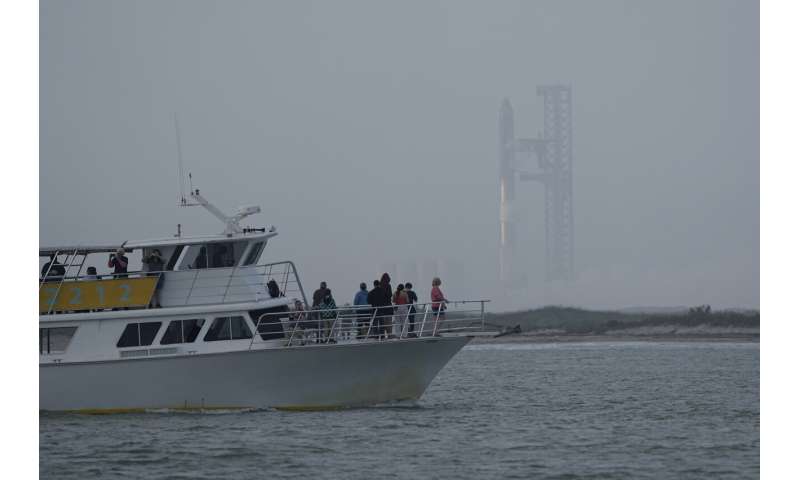
A tour boat passes SpaceX’s Starship, the world’s biggest and most powerful rocket, was it prepares to launch from Starbase in Boca Chica, Texas, Thursday, April 20, 2023. © AP Photo/Eric Gay
In the weeks leading up to the flight, Musk gave 50-50 odds that the spacecraft would reach orbit.
The company plans to use Starship to send people and cargo to the moon and, eventually, Mars. NASA has reserved a Starship for its next moonwalking team, and rich tourists are already booking lunar flybys.
It was the second launch attempt. Monday’s try was scrapped by a frozen booster valve.
At 394 feet and nearly 17 million pounds of thrust, Starship easily surpasses NASA’s moon rockets—past, present and future. The stainless steel rocket is designed to be fully reusable with fast turnaround, dramatically lowering costs, similar to what SpaceX’s smaller Falcon rockets have done soaring from Cape Canaveral, Florida. Nothing was to be saved from the test flight.
The futuristic spacecraft flew several miles into the air during testing a few years ago, landing successfully only once. But this was to be the inaugural launch of the first-stage booster with 33 methane-fueled engines.
SpaceX has more boosters and spacecraft lined up for more test flights. Musk wants to fire them off in quick succession, so he can start using Starships to launch satellites into low-Earth orbit and then put people on board.
2023 The Associated Press. All rights reserved. This material may not be published, broadcast, rewritten or redistributed without permission.
Citation:
SpaceX giant rocket explodes minutes after launch from Texas (2023, April 20)
